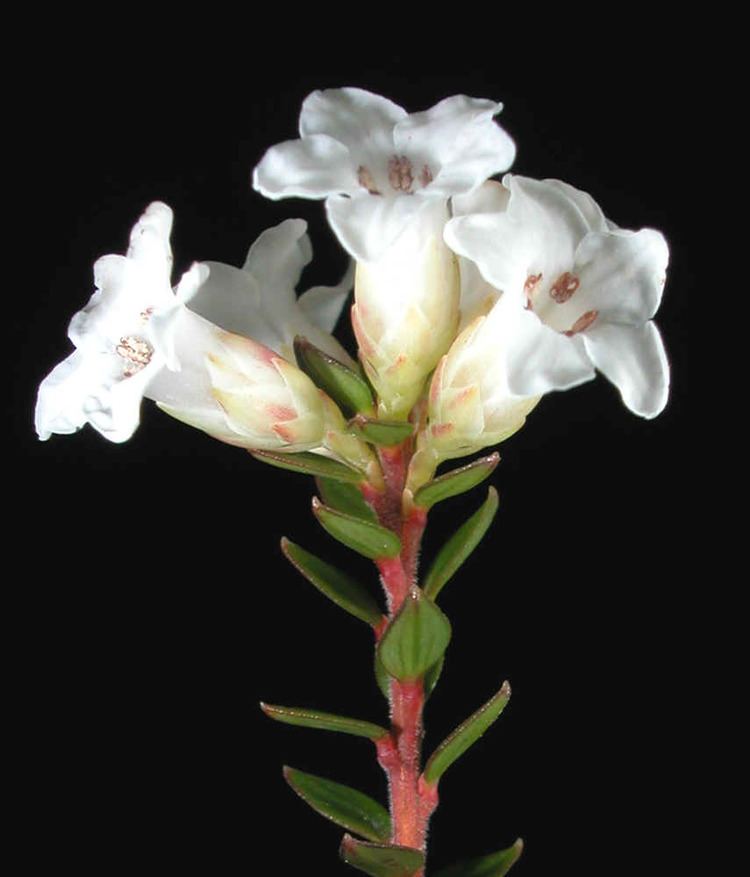Rank Species | ||
 | ||
Similar Epacris gunnii, Epacris pulchella, Epacris obtusifolia, Richea scoparia, Epacris microphylla | ||
Epacris serpyllifolia, also known as alpine heath, is a plant of the heath family, Ericaceae, that is native to southeast Australia: the states of Tasmania, Victoria and New South Wales. Growing in heathland, sup-alpine and/or mountainous areas, it is generally a small shrub around 0.3 metres to 1.2 metres in height, with small stiff leaves. White tube-like flowers appear from spring to early summer. It regenerates after bushfire by seed or by resprouting.
Contents
Description
Occasionally mistaken for Archeria comberi. Epacris serpyllifolia grows as a woody shrub that ranges from prostrate to bushy and erect. It is generally a small shrub around 0.3 metres to 1.2 metres in height. The branches are stiff and glabrous, while branchlets are pubescent.
Leaves are shiny green in colour and newer leaves are generally reddish. The leaves grow to about 5mm in length and are ovate in shape, but rather acute and mucronate (pointy). They are generally flat, however sometimes can be slightly concaved.
The flowers mainly occur between spring and early summer. They form in the uppermost axils, characteristically solitarily, but are crowded together on the axils. White in colour, they are 1 cm to 1½cm in length. They are narrow and tubular. The bracts and sepals are rather broad, acute, often sandy coloured. The tubular corolla consists of 5 petals. The corolla scarcely exceeds the calyx for the lobes are shorter than the tube. Anthers and style sometimes partially protude outside the corolla tube. The fruit is a papery capsule.
Distribution
Epacris serpyllifolia is widespread throughout Tasmania. It is most common and widespread at altitudes above 900m asl. In Tasmania its population is focussed in the south-west of the state, the central highlands and in the north-east around Ben Lomond National Park. It can also be found on the boards of Victoria and New South Wales, in Kusciuszko National Park. The species grows in widely diverse habitats including tolerant of soil types from fertile, to loamy, to poorly drained. Epacris serpyllifolia can handle sites that have high exposure to the sun, wind, snow and/or rain.
Cultivation
The species is not often seen in cultivation, it is able to be cultivated. Epacris serpyllifolia is difficult to grow from seed, however it is still possible. Seeds can be collected when the lower capsule on the stem have opened, then the capsules higher on the stem will be ready. Germination time is 10 – 20 weeks. Propagation can be carried out by using cuttings from firm, 'fresh', current season's growth.
